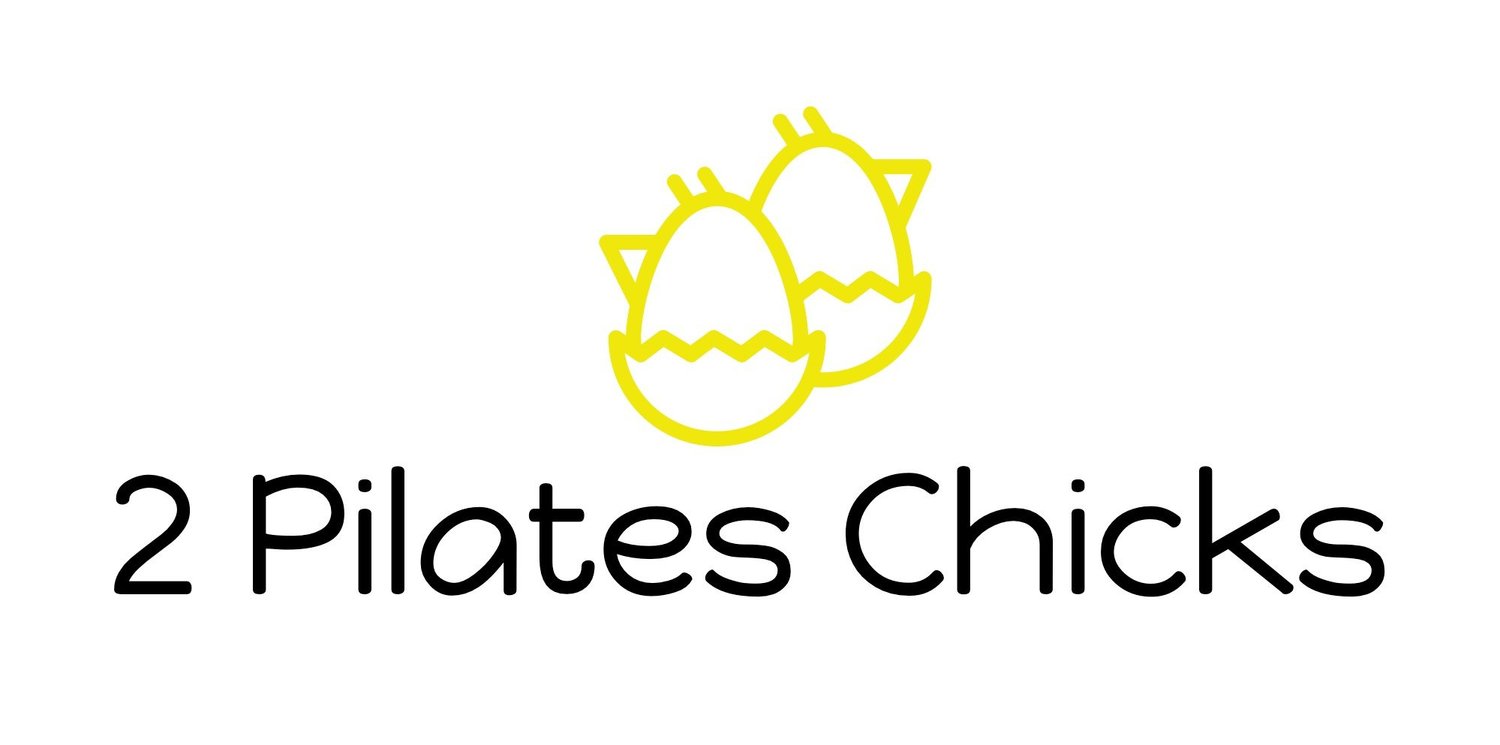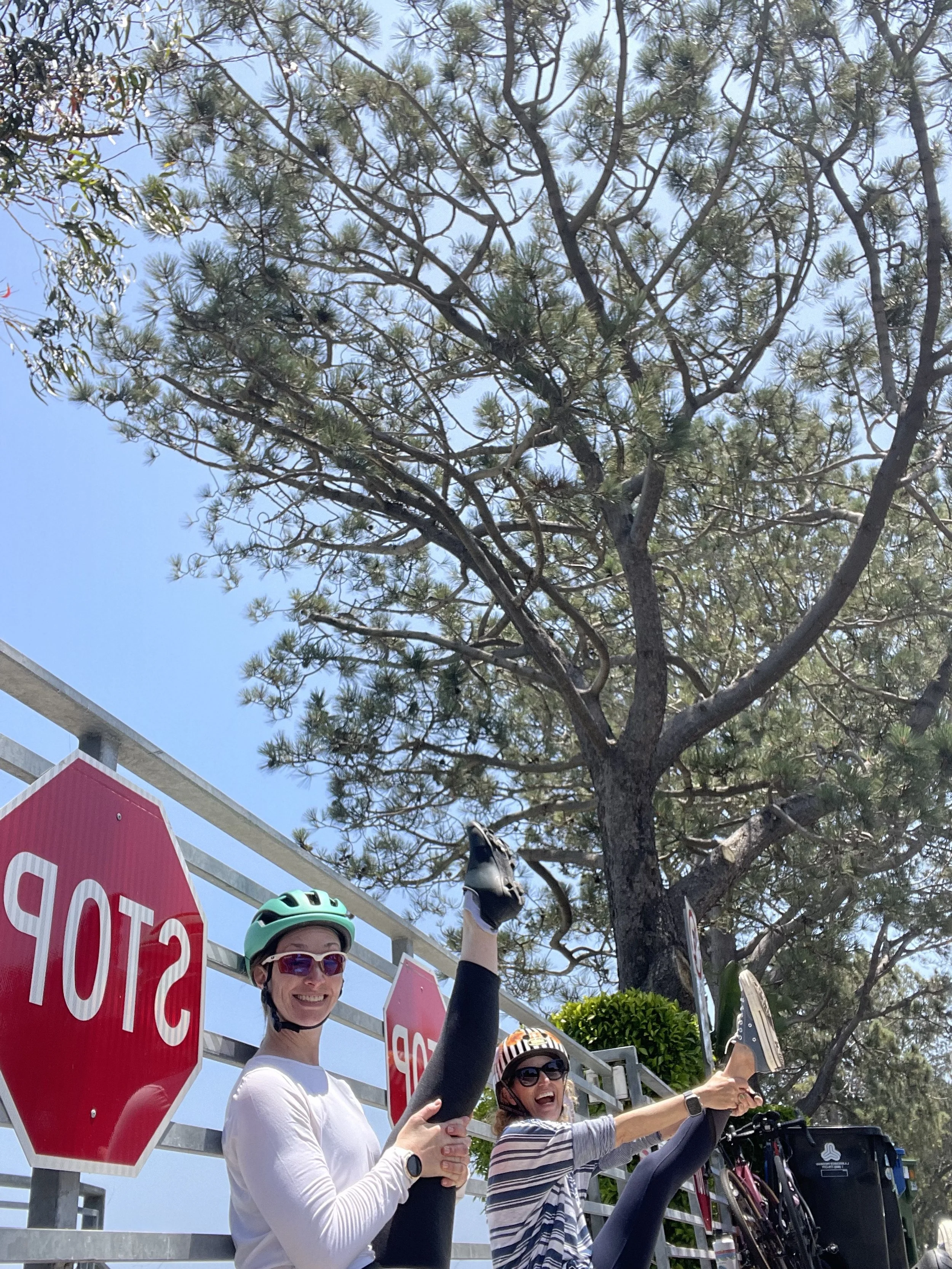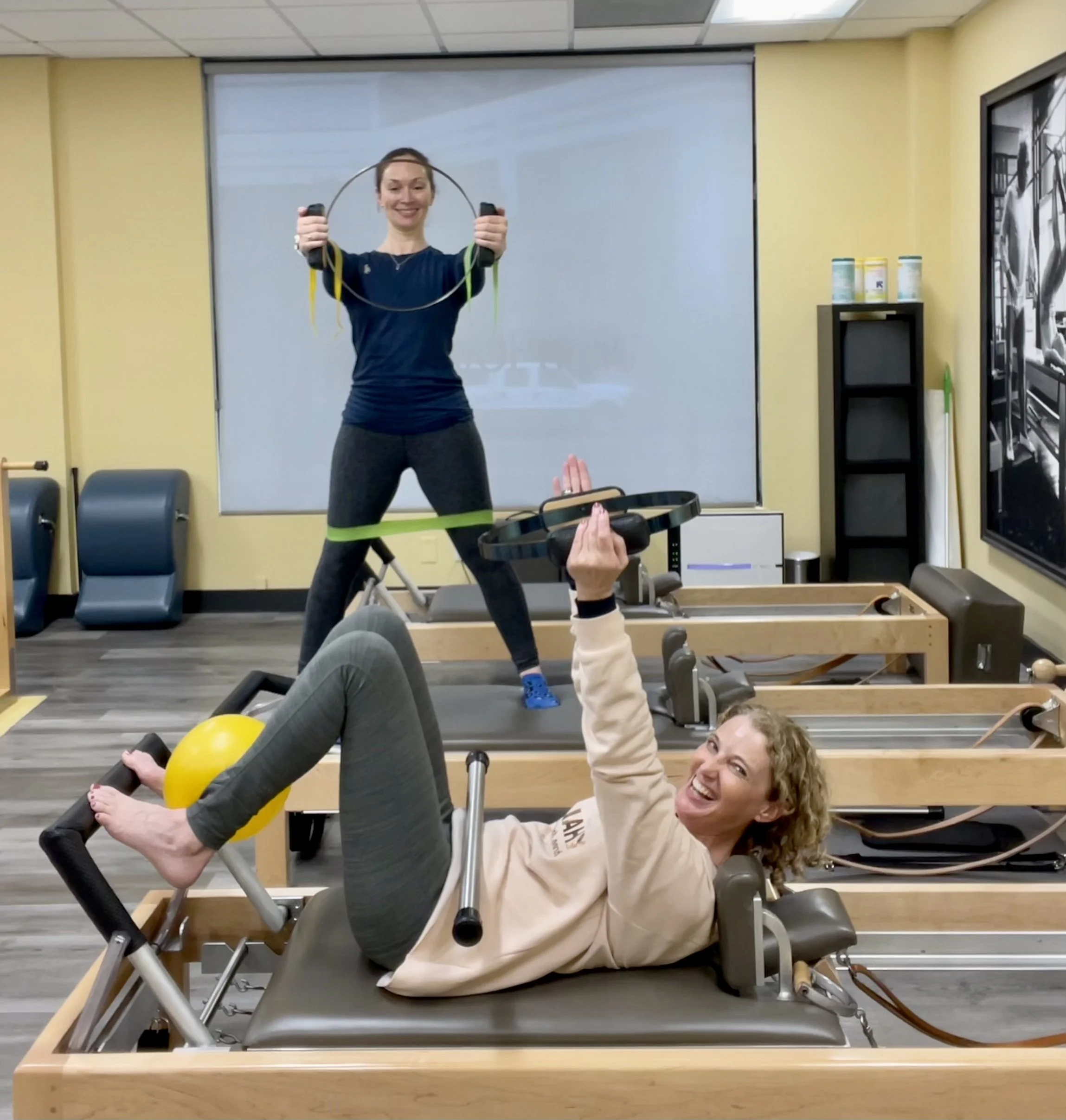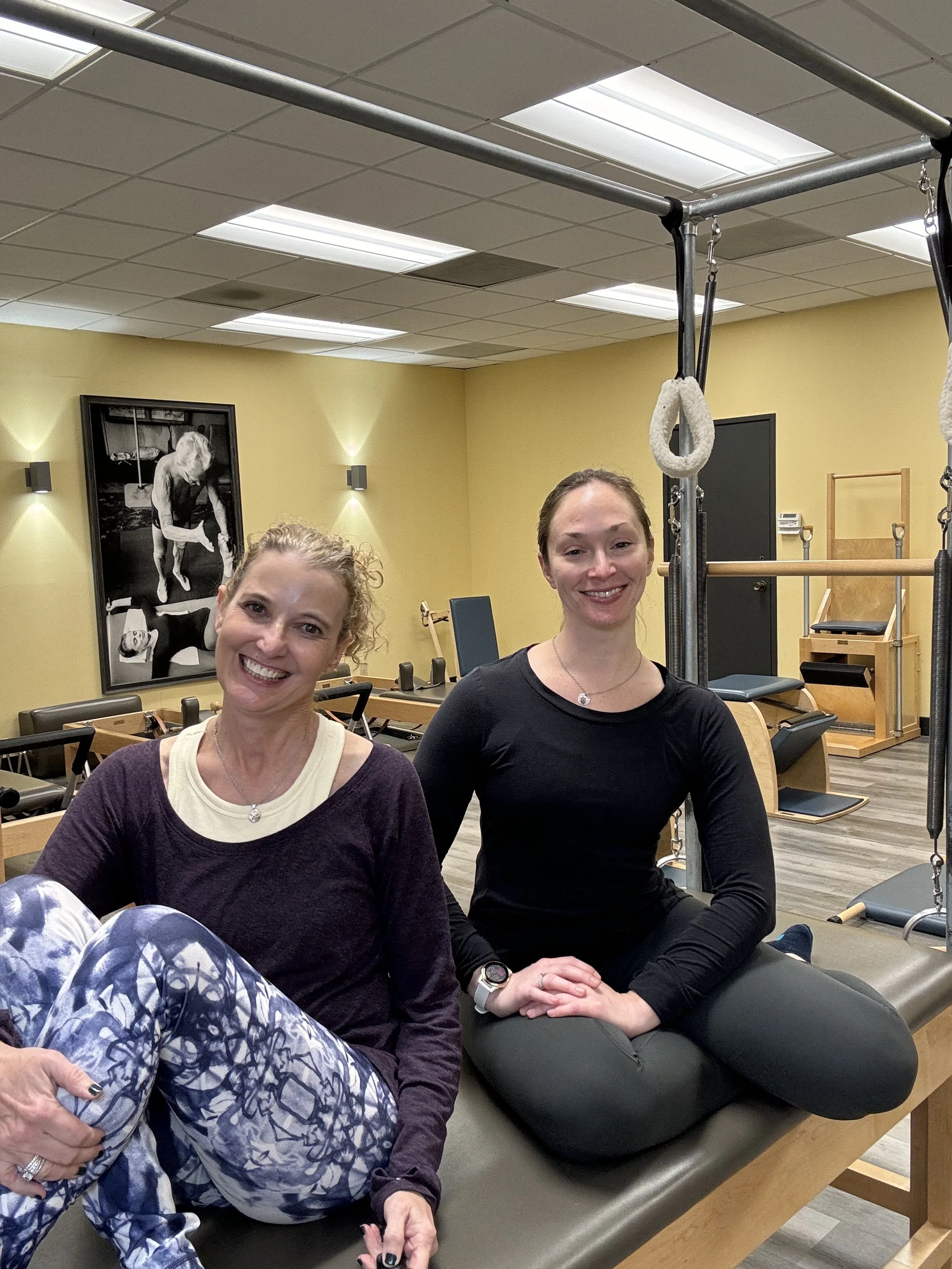Is it ok to be creative teaching Pilates?
Is it ok to be creative when teaching Pilates? Can we make things up when teaching Pilates or do Pilates teachers need to stick to traditional or classical Pilates? What counts as Pilates?
This is a heated and intense conversation in the Pilates world. Those who don't teach or practice Pilates are often surprised to find out there is politics in Pilates. The biggest point of contention within this industry revolves around the ongoing debate over what qualifies as Pilates and what can be rightfully labeled as such. It is a question of whether Pilates teachers should adhere strictly to a traditional or classical approach, or if there is room for creativity and adaptation.
In our podcast “Navigating Creativity in Pilates”, we drew inspiration from an insightful article by a fellow teacher, which explored how Pilates instructors can strike a balance between creativity while honoring the foundations of the method.
Within the Pilates community, we think we have a separation between those who adhere rigidly to specific classical teaching methods and those who advocate for or allow creative adaptations to meet clients' individual needs. It is important to clarify that promoting creativity does not imply discarding the fundamental principles of Pilates or venturing into uncharted territory. Rather, it involves applying creativity within the framework of our foundational education, encompassing anatomy, precautions, contraindications, and safety protocols learned during our certification programs. The goal is to build upon this foundation and effectively tailor the Pilates experience to address each client's unique requirements.
We start from the foundation and then we can be creative to adapt the work to what each client needs. By building off of the foundation of Pilates we can accurately find the purpose of the exercises we're giving to the client and reasons for choosing those exercises.
As Pilates teachers, our primary focus is teaching the body in front of us. We must teach the client who is with us in the session, focusing on their needs and injuries for the particular session every time they come into our studio. We must adapt our teaching to meet the needs of each client, considering their specific goals, injuries, and limitations during each session.
New teachers will stay tightly to what they originally learned in their training programs, and they should at first. But fairly quickly, we see that most clients need modifications and variations of exercises. The reality of working with diverse clients necessitates modifications and variations to exercises. As we develop as teachers, it is through continuous learning and the exploration of new tools and techniques that we gain better insights into how to guide our clients, to help them gain strength, mobility, and stability, and how to help them connect to their bodies and to the work. It takes years to develop as a teacher in order to deeply understand the foundational work enough to then be able to not only see what a client needs but then be able to creatively adapt the foundations of Pilates for the client.
Regardless of the level of creativity we adopt within our teaching, it is necessary to question the purpose behind each exercise. We must consider whether an exercise is safe and effective for achieving the intended outcome for each client. If an exercise poses any safety risk or is not appropriate for a specific client, it is our responsibility as teachers to find alternative approaches to achieve the same desired result. Even within the traditional repertoire, certain exercises may need to be modified or omitted for individual client's well-being.
Sometimes we have to be creative for a client even when we're staying within classical Pilates in what we're teaching. Maybe the traditional method doesn't work for that particular person, maybe they can't do a majority of the exercises in the classical order, or maybe they have preexisting conditions that preclude them from doing many of the classical exercises. In these cases, we have to consider how we can change the traditional exercise for this client to help them achieve their goal, and what they need in order to accomplish the exercise.
We must always ask ourselves why we are choosing a certain exercise for the client, what the purpose is of that exercise, and how it can help that person. What are we trying to accomplish with each exercise? Is the exercise safe and effective for the purpose we are trying to accomplish, and if it is not safe, is there a better way to get the client to that same outcome?
The labels associated with different Pilates styles, such as classical, contemporary, or traditional, have evolved over time and can be interpreted differently by various teachers. Contemporary Pilates embraces the understanding of foundational exercises while tailoring the practice to the specific needs of each client. On the other hand, there are variations within the fitness industry that incorporate Pilates-inspired movements, often referred to as gym-based Pilates, reformer fitness classes, or rehabilitative-focused Pilates. These variations still fall under the umbrella of Pilates but may deviate from traditional or classical approaches.
In Pilates, there is often an implication that we must choose between teaching in one specific way or another. Either we're classical, or we're contemporary; we're true to the Pilates method or we're not. However, it is much more nuanced than that. There is always something to learn from various Pilates teachers, regardless of the style in which we received our training. We continue building our foundation of knowledge throughout our careers. As teachers, we should never stop learning. We are constantly deepening our understanding and finding the tools and techniques that work for each of us as unique teachers, that can help us better guide our clients.
In the past, contemporary Pilates referred to adaptations made by renowned teachers like Eve Gentry and Kathy Grant, who remained true to the foundational principles of Pilates while incorporating their unique teaching philosophies and teaching to the client's individual needs. Pilates 'elders,' or the first-generation teachers, had to utilize the teachings they received originally from Joe and modify them according to their client's specific requirements. They were creative as they had to teach the body in front of them. They created new movement potentials that we now all learn based on their deep understanding of movement from their own unique backgrounds and the movement style they learned from Joe Pilates. They were creative, knowledgeable, and connected to the work, and, they met their clients where they were at the time.
Creativity in Pilates teaching should not be synonymous with haphazardly inventing exercises or incorporating flashy props purely for the sake of novelty. Instead, it involves leveraging our foundational knowledge, honed intuition, and deep understanding of the Pilates method to make informed decisions for our clients. As teachers, we must ensure that our creativity aligns with the purpose of the exercise and the client's specific needs, keeping them engaged, challenged, and focused throughout the session.
To effectively navigate the fine line between creativity and adhering to Pilates foundations, it is vital for teachers to pursue ongoing education and constantly deepen their understanding of the method. Burnout and a sense of being lost in the work can occur when teachers forget or fail to fully comprehend the foundations and purpose of Pilates exercises. By reconnecting with foundational knowledge, seeking further education, and maintaining curiosity, teachers can reinvigorate their teaching practices and adapt the Pilates method confidently to meet individual clients' needs. We always need to connect back to the foundations of Pilates, even when our roots as teachers are not in the Classical Pilates method.
Creativity in teaching Pilates is a dynamic and multifaceted concept. It involves blending our foundational knowledge with adaptability and sensitivity to each client's unique needs. Striking the right balance between creativity and honoring the Pilates foundations allows us to provide effective, safe, and purposeful Pilates experiences. By embracing our authenticity as instructors and continually expanding our knowledge, we can empower ourselves to guide clients towards their own unique, optimal movement, while remaining true to the essence of Pilates.
Embrace your authenticity as a teacher, stay true to your own style, and don't hesitate to explore your creativity. However, always keep in mind the reasons behind your choices, the purpose it serves for your client, and the ultimate goal you want them to achieve through your guidance.






